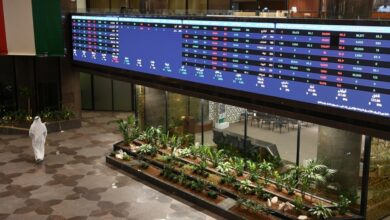Why India’s elections span six thrilling weeks
The election cycle spans over 44 days, which is long even by India’s standards. This year, there are seven voting days, starting with Friday's first phase where people will cast ballots for 102 constituencies nationwide.

• India is set to begin the world’s largest general elections on Friday, with nearly a billion people eligible to choose 543 members of the lower house of parliament.
• The size of India and its electorate is the chief reason why the general election takes so long. India’s eligible voters, numbering 968.6 million, surpass more than twice the population of the EU, which stands at 448 million.
This year’s elections will be India’s second-longest, following the inaugural exercise after independence in 1947 from colonial ruler Britain, which lasted four months from October 25, 1951, to February 21, 1952.
India is set to begin the world’s largest general elections on Friday, spanning terrain from the icy Himalayas to humid jungles, with nearly a billion people eligible to choose 543 members of the lower house of parliament.
Here’s why the exercise takes so long:
The election cycle spans over 44 days, which is long even by India’s standards; for comparison, the 2019 vote lasted 39 days. This year, there are seven voting days, starting with Friday’s first phase where people will cast ballots for 102 constituencies nationwide. The final polling date is June 1, covering 57 seats. All votes will be counted together on June 4.
Vote numbers
The size of the country and its electorate is the chief reason why the general election takes so long. India’s eligible voters, numbering 968.6 million, surpass more than twice the population of the European Union (EU), which stands at 448 million. This figure has grown by 8% since the 2019 elections. With an estimated population of more than 1.4 billion, India overtook China last year as the world’s most populous country.
Geographical spread
Some of India’s 28 states and eight federally governed territories complete voting in just one phase, while in larger states, constituencies vote on different dates. For instance, the northern state of Uttar Pradesh, with a population of more than 230 million and 80 members of parliament, the highest among all states, will vote in parts during each phase.

The Election Commission manages this massive exercise by dividing constituencies into smaller voting boroughs, with each polling station accommodating no more than 1,500 registered voters. This necessitates the setup of 1.048 million polling stations this year, located in places such as government buildings and schools, which are closest to the majority of voters.
They are situated in terrain that ranges from the icy heights of the Himalayas in the north to the dense jungles of central India and the remote deserts in the western state of Rajasthan.
Security arrangements
Incidents of violence and vote-rigging have marred India’s election history, but such instances are drastically fewer today. Nevertheless, to ensure that the elections are free, fair, and conducted without fear, more than 300,000 federal security personnel support the police forces controlled by state governments.
The intervals between voting allow these personnel time to move around the country, typically by rail. They guard election officials transporting voting machines to polling stations and then ensure the devices remain secure until counting day, thereby maintaining the integrity of the elections.













